 If you’re interested in fabric art but don’t know where to start, here are a few basics.
If you’re interested in fabric art but don’t know where to start, here are a few basics.
First, decide the kind of fabric art that you’d like to start with.
You’ll have lots to choose from. Here are a few.
Cloth dolls and figures
If you’ve always loved dolls, stuffed animals, or art figures, you may enjoy making cloth dolls and figures. You can make them entirely of fabric, or mix different materials, such as a polymer clay face, or wooden chopsticks for legs.
Cloth dolls can be as realistic or stylized as you like. You can make sewing figures or no-sew dolls. Materials can include cloth and stuffing plus needle & thread, or alternative materials.
If you’re a beginner, your doll can be two pieces of fabric sewn, fused, or glued together. If you’re already a fabric artist, the sky’s the limit in terms of materials and techniques.
Years ago, at Yahoo!Groups, I started a group called Wild Art Dolls. It was wild and it was fun.
Quilts and wallhangings
Many people start their fabric art careers by making quilts. You can start simply, sewing together squares of fabric.
Or, you can use a commercial pattern–or your own design–for a more unique statement. You can work with traditional designs, or wildly contemporary concepts.
For an overview of your options as a quiltmaker, see these two magazines: Quilters Newsletter magazine, and Quilting Arts magazine.
For mixed media art that includes fabric – a fine way to mix your other favorite techniques and materials with quilting & fabric – check Cloth, Paper, Scissors. They have LOTS of fun ideas!
I started with traditional quilts in the mid-1970s. (Yes, really. I started young!)
At first, I hand-pieced baby quilts. As I became more comfortable with quiltmaking, I made larger quilts with my sewing machine.
Next, I learned “quilt in a day” techniques using strip piecing, and modified these designs to make quilts for shops and galleries.
Finally, I started incorporating fine arts and crafts techniques and mixed media approaches to art quilts and wallhangings.
That’s what I’m working on again, now.
Cloth jewelry and accessories
Many people enjoy making fabric jewelry, such as cloth beads, bracelets and cuffs, and necklaces. These are a fine starting point for beginners.
Also, you may enjoy making fabric art accessories for your wardrobe and as gifts for others. These can include belts and sashes, purses, hats, and more.
A quick search for the topic that interest you
Wearable art – clothing
Pieced and/or embellished garments are among the most fabulous and complex fabric art projects. Belle Armoire magazine is very popular among paper and mixed media artists making the transition to wearables.
Special issues of Threads, Ornament, and Quilters Newsletter magazines also feature wearable art and related topics.
Where to start…?
My best advice is to start with whichever area seems most exciting to you. There are simple and complex approaches to every kind of fabric art.
Pick one and get started today. You’ll soon find a niche whether you’re a beginner or an experienced tailor/designer/artist.
Delve in and have fun!
 I’ve always loved the color purple. Almost every shade of purple delights me.
I’ve always loved the color purple. Almost every shade of purple delights me.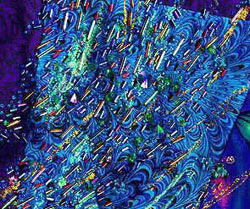
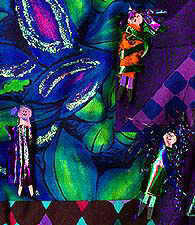

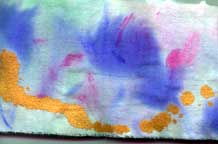

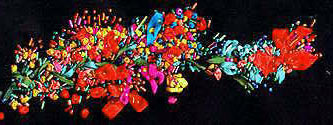
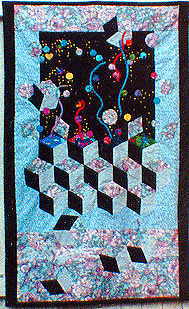 In 1991, I designed and made this quilted wallhanging for a challenge in Salt Lake City, Utah.
In 1991, I designed and made this quilted wallhanging for a challenge in Salt Lake City, Utah.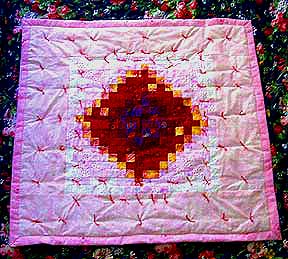 This is a baby quilt that I made in 2003. It’s made with over a dozen fabrics, each 100% cotton.
This is a baby quilt that I made in 2003. It’s made with over a dozen fabrics, each 100% cotton.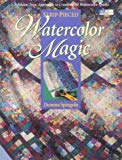
 This rocking chair is called a Lincoln rocker by some, and a Kennedy rocker by others. It’s the same design that Jack Kennedy had in the White House. He felt that it helped his back.
This rocking chair is called a Lincoln rocker by some, and a Kennedy rocker by others. It’s the same design that Jack Kennedy had in the White House. He felt that it helped his back. The chair was well-used and well-loved for several years, until — as shown at left — the dry woven seat finally began to sag and then collapse.
The chair was well-used and well-loved for several years, until — as shown at left — the dry woven seat finally began to sag and then collapse.
 If you’re interested in fabric art but don’t know where to start, here are a few basics.
If you’re interested in fabric art but don’t know where to start, here are a few basics.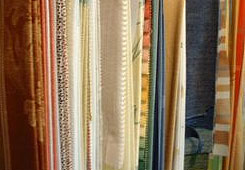 Before rushing out to buy supplies for your fabric art projects, consider a these important points.
Before rushing out to buy supplies for your fabric art projects, consider a these important points.
 In the 20th century, other magazines followed this trend, including Ladies’ Home Journal (Sheila Young’s “Lettie Lane”), Pictorial Review (Grace Drayton’s “Dolly Dingle”), Good Housekeeping (Sheila Young’s “Polly Pratt”), and the famous “Kewpie Dolls” by Rose O’Neill in Woman’s Home Companion.
In the 20th century, other magazines followed this trend, including Ladies’ Home Journal (Sheila Young’s “Lettie Lane”), Pictorial Review (Grace Drayton’s “Dolly Dingle”), Good Housekeeping (Sheila Young’s “Polly Pratt”), and the famous “Kewpie Dolls” by Rose O’Neill in Woman’s Home Companion.